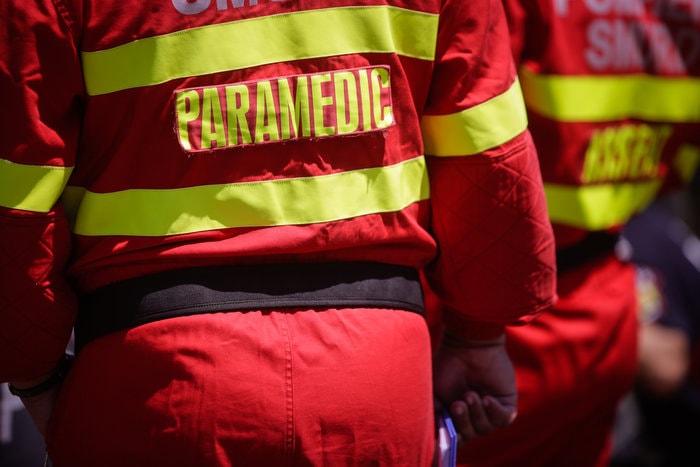
We've all been there: You're working a code in a crowded restaurant—a patron who has just finished a gargantuan meal—and as you set up your intubation equipment, the patient begins to vomit. Luckily, you have your portable suction unit ready, so your partner begins to suction as you prep your tube. But as you position yourself at the head, the patient continues to spew. What should you do? How are you supposed to intubate a patient who is actively vomiting? Impossible, right? No. There is now a technique that enables you to intubate, even in the most difficult conditions.
SALAD partners aggressive suction with oral intubation, allowing the rescuer a clear path to the vocal cords. Here are the steps:
- Using a rigid suction catheter, suction the airway.
- Insert the laryngoscope blade as you continue suctioning, shifting the suction catheter to the corner of the patient's mouth and to the left of the blade.
- Position the suction catheter tip at the proximal esophagus, so that it can continually suction as you visualize the cords.
- Proceed with intubation.
- Suction the endotracheal tube prior to ventilation to avoid contaminating the lungs.
SALAD provides a clear path to the trachea, even in the presence of copious emesis, protecting the lungs and enabling the placement of an advanced airway.
Consider using the specialized, hyper-curved catheter to maximize suction even on the most difficult airways (obese, short-necked, or elderly patients).
Avoiding Aspiration
The key to maintaining airway patency, especially in a patient unable to protect their own airway (due to stroke, head injury, overdose, and so on), is to keep gastric contents, blood, and oral secretions from entering the lungs. Aspiration, or inhalation of bodily fluids, not only interferes with air exchange, but can lead to aspiration pneumonia—a common complication in post-resuscitated patients.
By preventing aspiration, you not only enhance patient oxygenation, improving their chances after resuscitation, but you also reduce hospital stays by heading off complications (like pneumonia), thereby reducing the overall cost to the patient.
How to Master SALAD
Now that you understand the efficacy of SALAD, you'll want to implement it in your department. Using a typical intubation mannequin, some basic equipment (tubing that is connected to the esophagus of the mannequin), and a special mixture (xanthan gum powder and white vinegar with a little food coloring) for the simulated airway contaminant (SAC), you can conduct training scenarios using the SALAD technique to perfect your skill and enhance future field intubations.
The Critical Role of Portable Suction in SALAD
It is obvious you can't perform SALAD without reliable portable suction. Therefore, here are a few critical reminders when it comes to maintenance and inclusion of your portable suction unit:
- Proper maintenance is key and should include:
- Checking the unit at the start of each shift
- Replacing used or damaged batteries
- Decontaminating after each use with a mixture of bleach and water
- Never reuse disposable parts (catheters, tubing, or canisters)
- Keep the suction unit alongside your ALS equipment and take it along on every call.
- Include a small unit in your airway, trauma, or tactical medical bag.
- Have battery-powered units available for natural disaster response when electricity is in short supply.
- Include suction procedures in all ALS training scenarios.
- Conduct routine SALAD training sessions to keep skills sharp
Suction Assisted Laryngoscopy Airway Decontamination (SALAD) provides a novel approach to airway management, and is far more effective than conventional suctioning techniques. By clearing the airway with continuous suction and enabling the placement of an endotracheal tube, you protect the lungs from aspiration which can improve patient outcomes.
Novel Airway Training Tool that Simulates Vomiting: Suction-Assisted Laryngoscopy Assisted Decontamination (SALAD) System,














